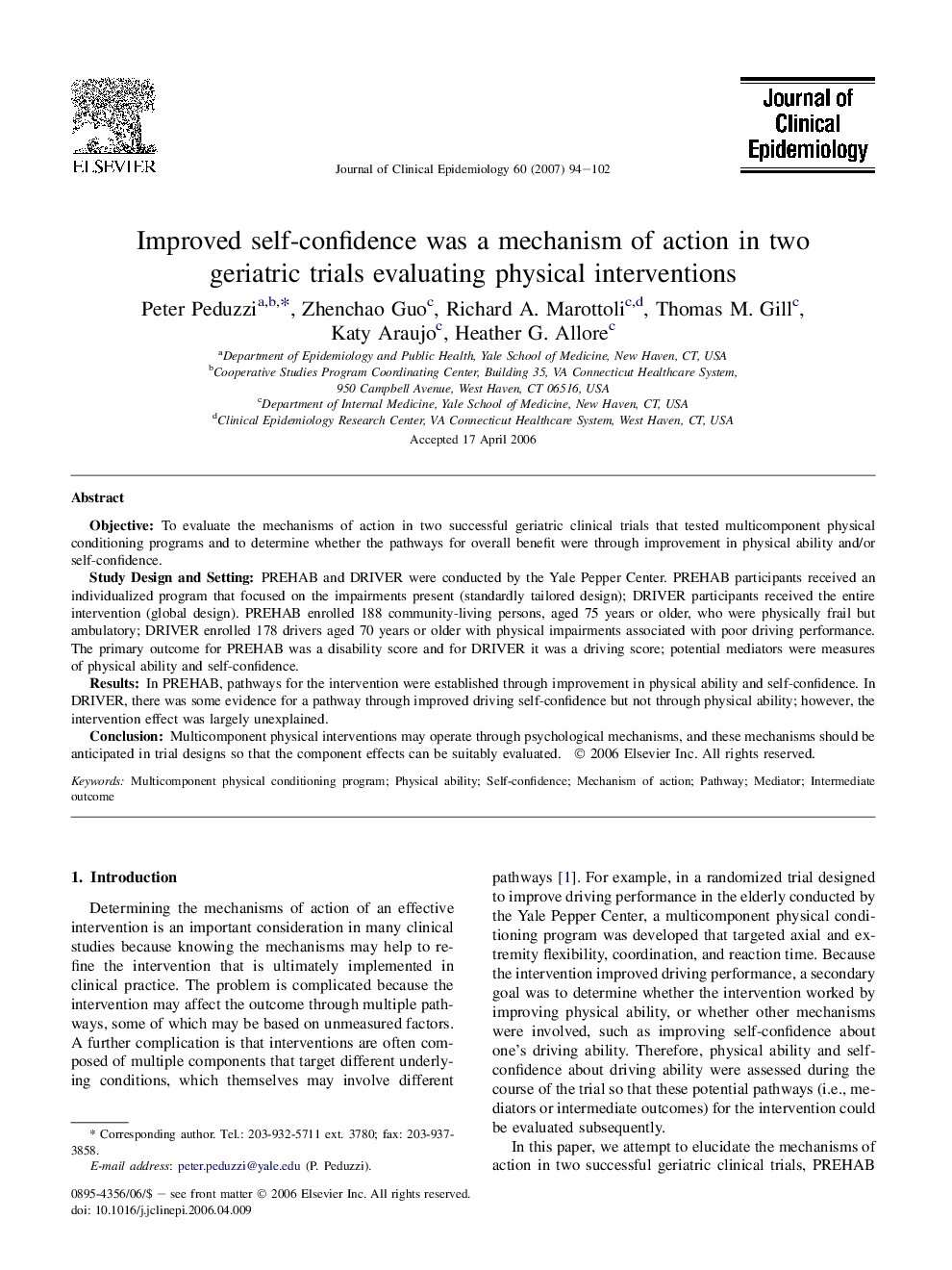| Article ID | Journal | Published Year | Pages | File Type |
|---|---|---|---|---|
| 1083551 | Journal of Clinical Epidemiology | 2007 | 9 Pages |
ObjectiveTo evaluate the mechanisms of action in two successful geriatric clinical trials that tested multicomponent physical conditioning programs and to determine whether the pathways for overall benefit were through improvement in physical ability and/or self-confidence.Study Design and SettingPREHAB and DRIVER were conducted by the Yale Pepper Center. PREHAB participants received an individualized program that focused on the impairments present (standardly tailored design); DRIVER participants received the entire intervention (global design). PREHAB enrolled 188 community-living persons, aged 75 years or older, who were physically frail but ambulatory; DRIVER enrolled 178 drivers aged 70 years or older with physical impairments associated with poor driving performance. The primary outcome for PREHAB was a disability score and for DRIVER it was a driving score; potential mediators were measures of physical ability and self-confidence.ResultsIn PREHAB, pathways for the intervention were established through improvement in physical ability and self-confidence. In DRIVER, there was some evidence for a pathway through improved driving self-confidence but not through physical ability; however, the intervention effect was largely unexplained.ConclusionMulticomponent physical interventions may operate through psychological mechanisms, and these mechanisms should be anticipated in trial designs so that the component effects can be suitably evaluated.
